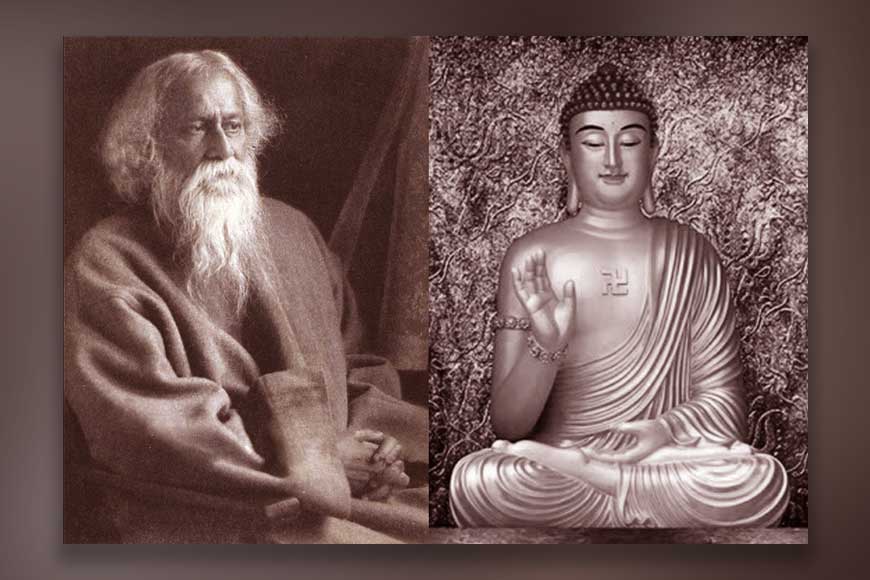Lord Buddha had deeply impacted Rabindranath Tagore

Despite being a practicing Brahmo, Rabindranath Tagore never left any stone unturned in trying to delve into all kinds of religious teachings. The rational and humanistic aspects of the teachings of Lord Buddha hence attracted the creative genius of Tagore. He said in one of his letters: “Only once in my life, did I feel like prostrating myself before an image and that was when I saw the Buddha at Bodh Gaya.” Tagore found the Buddhist principle of man’s social equality particularly alluring to his own concept of ‘divinity in man.’
Over and over again many of his female characters show deep respect and reverence to the lord and even are ready to die to uphold the teachings of Lord Buddha. Take for example Srimati of his poem Pujarini who defies the order of King Ajatshatru and goes to light a lamp on a Buddhist stupa everyday and finally lays her life for her action. But Srimati’s complete devotion to the cause of Lord Buddha brings out the courage of a woman. Similarly, Chandaalika is a dramatic expression of a similar ideology, where Buddha’s disciple named Ananda gives a girl of the marginalized community, the respect of a human being. Tagore found material for the propagation of this idea of equality and humanism through an intense conflict between marginality and spirituality in Buddhism. Infact, Tagore’s Chandaalika is also a big slap on the concept of casteism that was practiced to no end in the then Hindu society.
Also read : What was Tagore doing at Kashimbazar Rajbari?
John Wilson, in his celebrated book Indian Caste Volume I, observes: “Buddhism in its most important social aspect was a reaction against caste, the tyranny of which multitudes had begun to feel to be unbearable. Rabindranath Tagore realized that Indian society was permeated by religion and living myth, endowed with a psychic landscape having its own concept of time and space. He tried to portray this unique reality through modes and methods indigenous to Indian culture.” The story of the untouchable girl who once gave water to a Buddhist monk Ananda, falls in love with him as he treats her as equal. Tagore made use of this small part of the tale which in the original, the Shardulakarna Avadana, runs into dozens of pages. The location of the story is the famous Buddhist location of Sravasti. Lord Buddha had been staying at the garden of Ananthapindad. One day his favourite disciple Ananda, while on his way back from lunch at some house felt thirsty. He saw that a daughter of the chandals, as per caste system, the untouchables. And then the whole dance drama unfolds.
The same Lord Buddha again returns in Tagore’s Abhishar, with Buddhist Bhikku Sanyasi Upagupta and the woman who falls in love with him, Basabdatta, the courtesan. Probably Lord Buddha’s preaching of equality had touched Tagore to a large extent and he extensively travelled to South East Asian countries like Siam where the practicing religion was Buddhism.









